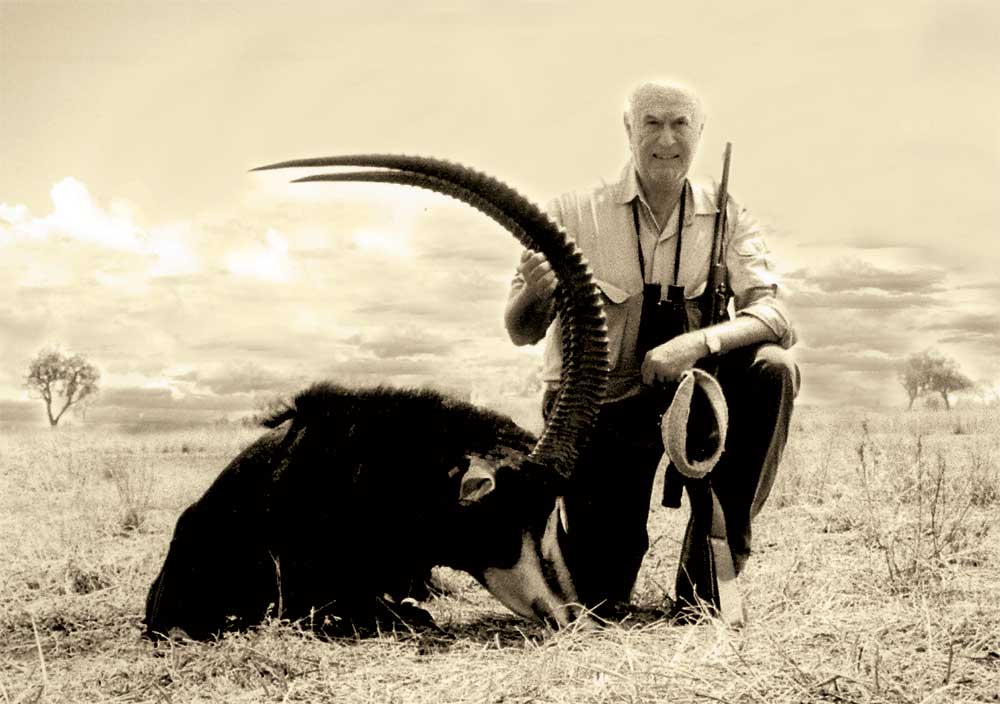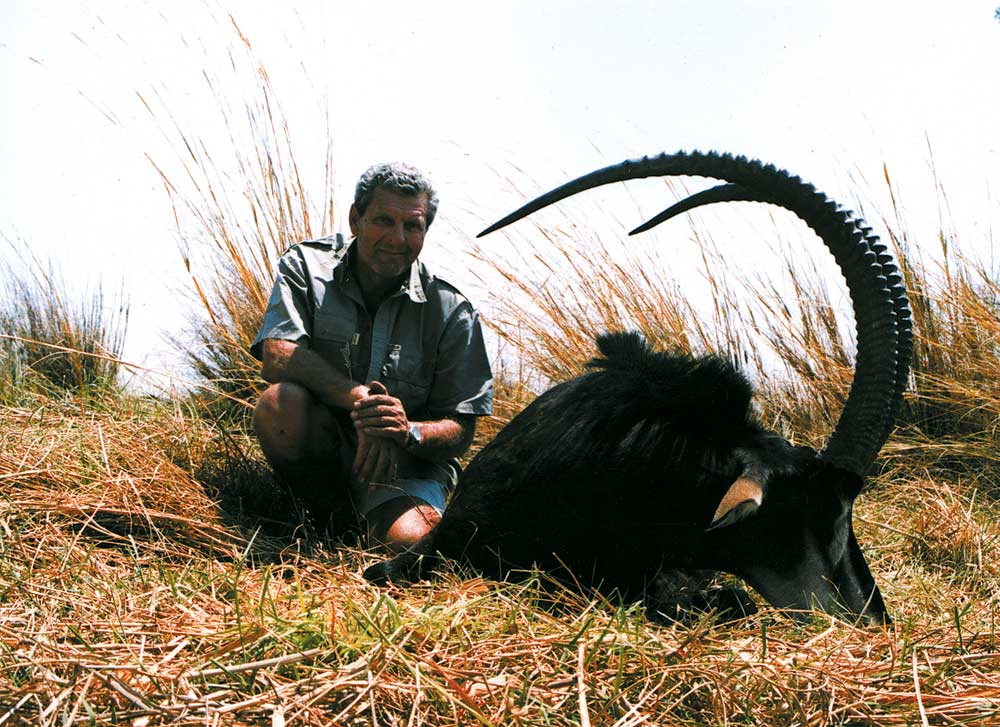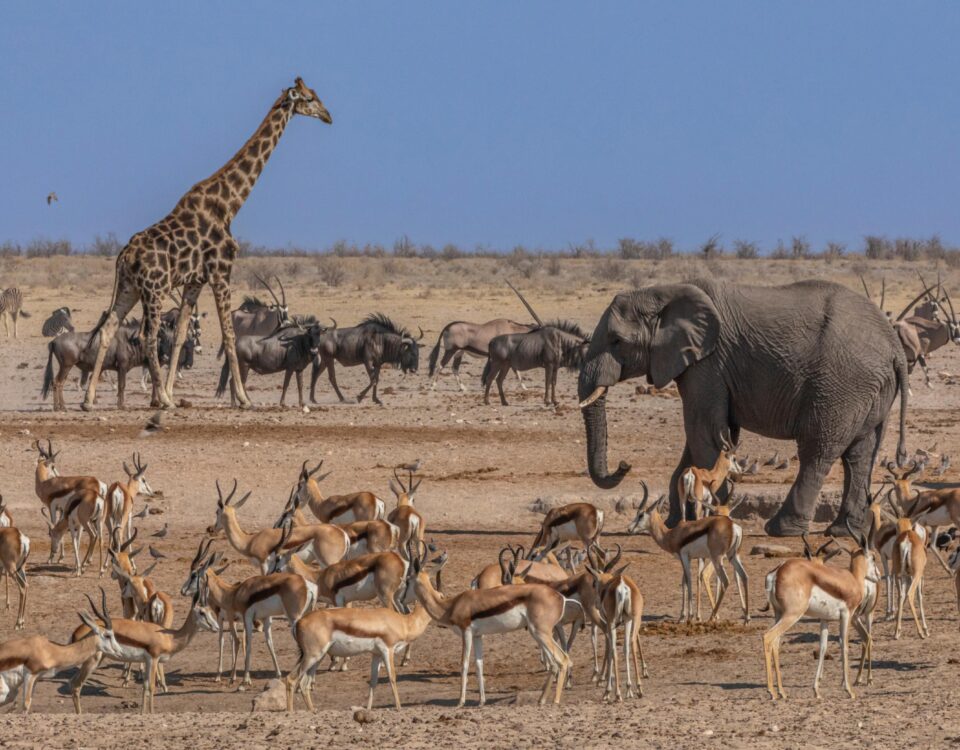|Main photo ©Dirk de Bod

3 rhino hunts up for auction in Namibia
June 6, 2016
The Omaheke – a place of discovery and adventure
June 8, 2016It is probably safe to say that every hunter dreams of big trophies.

The natural range of sable antelope, much sought-after by hunters, is limited to the Zambezi Region, formerly known as the Caprivi Strip. Every year a small number of permits is issued for hunting sable antelope in the Zambezi Region.
Q uite a few extraordinary trophies from Namibia were never entered into the record books, and other than the hunter and persons directly involved, nobody knew about them. This likeable fact, however, has created the impression among some, that even though game is plentiful in Namibia, the quality of trophies is not exceptional. I would like to counteract these perceptions to some extent, without turning the trophy into the measuring stick for the quality of a hunt.
Big Game Hunting in Asia, Africa and Elsewhere by Jacques Vettier is a fascinating book, excellently written at a time when it was still possible for a hunter with a thirst for adventure to go hunting in many African countries and almost anywhere in the world. It was also the time when it was fashionable to drop a few condescending words about Namibia, the forgotten hunting backwater. Only a few took the trouble to really get to know this country. Others just went hunting for a couple of days in the vicinity of Windhoek. The truly spectacular wilderness areas in the north-west were considered too far off the beaten tracks, too exhausting to get to. If they had heard of the Welwitschia mirabilis, which is found in Namibia, they simply ‘transferred’ it to the edge of the Kalahari where they had hunted oryx. That, they thought, was all there was to Namibia, and left.
Nevertheless this kind of visitor felt qualified to say the following about kudu in Namibia: “There are hundreds of kudus. There are so many of them that insurance companies refuse to cover car accidents resulting from night-time collisions with these large antelope. That says a lot, but for some inexplicable reason, the quantity seems to cancel out the quality of trophies in this country, where kudu horns rarely measure more than 50 inches.”
No need to get upset about such nonsense, especially since the book is a good read otherwise.
But for the sake of Namibia, which has never been a country of tape measure hunters, it is interesting to look at the sizes of trophies in an international context.
This edition contains a story about an unofficial (i.e. unregistered) world record kudu from Namibia. The horns of a kudu which an Austrian hunter, a client of professional hunter Franz Happel, shot in the vicinity of Okahandja in 2001, measured 72 inches. Bulls which exceed the magical limit of 60 inches are quite often taken. There cannot be any doubt that Namibia is kudu country par excellence not only in terms of quantity but also in terms of quality.
There can be no doubt that in every respect Namibia is one of the best destinations for international trophy hunters.

As for the trophy sizes of other game species which are typical for the South-West Arid Zone of Africa, for example springbok and oryx, the largest in the world usually come from Namibia, too. The world record that was set with a 193/8 inch springbok trophy taken south-west of Windhoek in 1973, was beaten in 2012 by a very old ram with horns exceeding 204/8 inches. He was shot near Büllsport, on the fringe of the Naukluft Mountains. This year a possibly record-breaking springbok was taken in the south-east of the country on the fringe of the Kalahari. With well over 19 inches, this trophy also beats the old world record from 1973, but is slightly less than the “2012 Naukluft ram”. The fact of the matter remains, however, that Namibia is a tape measure hunter’s mecca, not only when it comes to kudu, but also with regard to springbok.
The highest trophy-quality oryx, also known as gemsbok, are usually found in the southern Kalahari. The contestants for the largest trophies in the world are Botswana, Namibia and South Africa’s Northern Cape Province. An oryx trophy measuring 127 cm, from Namibia’s southern Kalahari, holds first place in the NAPHA Top Ten.
Almost all of the largest hartebeest trophies are from Namibia. Top trophies of up to 27 inches are taken in the central-east of the country. This makes the South African subspecies the strongest of the many subspecies of this grassland antelope.
East Africa boasts the largest warthog trophies. Boars’ tusks with a length of more than 40 cm are sensational everywhere, however. To my knowledge the largest warthog trophy reported from Namibia measures 46 cm. It was exhibited by the SWA Hunting Association at the Windhoek Show in the 1970s. First place of the NAPHA Top Ten is held by a boar with 43 cm tusks, which was shot in eastern Namibia on the fringe of the Kalahari.
Summing up, it can be said that Namibia’s trophy quality with regard to typical local game species, is truly exceptional. In the north-eastern parts of the country, where annual rainfall figures are higher, the variety of animals is larger. The natural range of sable antelope, much sought-after by hunters, is limited to the Zambezi Region, formerly known as the Caprivi Strip. Every year a small number of permits is issued for hunting sable antelope in the Zambezi Region. The trophy quality is similar to that of neighbouring Zambia, which boasts the largest trophies in the world. Trophies with horns measuring more than 40 inches are taken quite often. The largest Namibian one was over 48 inches. That sable antelope was shot in the Mahango Game Reserve in 2002.
The horns of buffalo in Namibia’s Zambezi Region are usually not as large as those of East African buffalo, but similar to those found in Botswana. But their massive boss, the fused base of the horns, is rather remarkable. Nevertheless, big buffalo trophies are also taken in Namibia from time to time. A very big bull, shot in the Caprivi in 2011, measured 4 inches.
Since the late 1980s Africa’s biggest elephants are taken in north-eastern Namibia. Occasionally similar trophies are also taken in Botswana, Mozambique and southern Tanzania. But the extraordinary average quantities of ivory, which are characteristic of elephants in the area around Khaudum National Park in north-eastern Namibia, are not found elsewhere.
Here is something remarkable: In 2004 a huge elephant bull was shot south of Khaudum. Both tusks had been broken in a fight with another bull but the remains of the right tusk still weighed in at 115 pounds. Since the diameter at the lip was 59.6 cm and still no less than 52 cm at the fracture line, it is safe to assume that the missing part had a length of about one metre. Thus he was an exceptional tusker who can safely be ranked among the biggest elephants ever taken.
There can be no doubt that in every respect Namibia is one of the best destinations for international trophy hunters. There is no need for the falsifications, edging in from the south, which increasingly threaten the natural ways of this country.

This article was first published in the HUNTiNAMIBIA 2015 issue.


